If you want to submit a product review click here.
Tricks of the Masters by Will Goldston
(c. 1942) (Submit Review) (Submit Update)Details: Will Goldston has been writing books on magic for many years. He is probably the most popular of magical authors, judged by the number of books he has written and the extent of their sales; for his writings on the subject now number several dozen titles, and a good many of them have run through a number of printings. We are somewhat at a loss to account for this popularity, since we personally have never regarded Mr. Goldston as our best teacher of magic. Robert-Houdin’s Secrets of Conjuring and Magic) Sachs’ Sleight of Hand) all the Hoffmann books, Downs’ The Art of Magic) The Tarbell Course) Hilliard’s Greater Magic) Hugard’s Modern Magic Manual) and some other choice works on magic actually show how to become a magician. The Goldston books, on the other hand, have seemed to us, in many instances, to do little more than tell how tricks are done; and this, as Professor Hoffmann pointed out many years ago, is quite another thing.
We feel, then, that the popularity of Mr. Goldston’s writings lies largely in their strong appeal to the host of persons who take delight in reading explanations of tricks, but have little or no desire to put this information into practice. We think this must be the case because, in a good many cases, Mr. Goldston’s directions are too brief to be entirely clear; because he often includes very old tricks in his books; and because so much of his material gives indications of having never been tried out before an audience. On the other hand, his books are always well written, they may be counted upon to have an abundance of really good illustrations, and they enjoy in general a high reputation for good printing and binding. It should be added that some of his ideas, which may not seem to be “practical” in the form in which they are presented, are often sufficiently stimulating to induce readers to get to work and develop tricks that find permanent places in their programs.
Tricks of the Masters is a typical Goldston book. It will be read enthusiastically by confirmed Goldston fans, whose name is legion, and with mingled feelings by others. The latter will wonder why the author uses the 15 pages of Chapter I to set forth his views on spiritualism and spiritualists; what has hap- pened to the textual matter that is needed to give meaning to the diagrams on page 89; and why Mr. Goldston has seen fit to publish once again The Afghan Bands (still using paper instead of the vastly more effective Wobensmith cloth rings), the venerable white-to-black glove trick, the oft-described production of a bowl of water on a table, the Abbott Spirit Paintings (which demands the use of a stage trap), and other time- honored feats. But they will be grateful for a number of interesting and worthwhile items, some of which we shall note below.
The book is divided into eleven chapters. We have already spoken of Chapter l. Chapter 2, an 8-page explanation of the tricks of fake mediums, will add little to the knowledge of the well-read magician. Chapter 3 (22 pages) is a first-class description of the “flourish” known as “card fanning” and the production of card fans by means of the “back palm.” This chapter has 7 pages of exceptionally fine halftone cuts. Chapter 4 consists of 26 pages of card tricks, several of which are very good. Chapter 5 (16 pages), on “close-up magic” with string, matches, and other small objects, is not at all exciting. Chapter 6 (14 pages) describes six handkerchief tricks, the best of which is the production of silk handkerchiefs from holes punched in an unprepared sheet of newspaper. Chapter 7 (33 pages), entitled De Biere’s Section, gives a short sketch of that performer’s life, outline descriptions (which are both interesting and informative) of the tricks and illusions included in De Biere’s “Maskelyne Theatre” program of 1928 and also of his later vaudeville act, and explanations of his Vanishing Bird Cage, Watch Box, Egg Bag, Handkerchief to Butterfly, Costume Trunk Illusion, and several lesser feats. This section is, of course, the highlight of the book, which, if it had been carried through as originally planned, would have been called The Secrets of De Biere and would have dealt exclusively with the life and feats of this famous magician.
Chapter 8 is the longest in the book, with 65 pages of miscellaneous tricks. Among the 35 feats described in this chapter are The “Real” Chinese Rice Bowls of Long Tack Sam; The Rising Wine Glass of Cardini; Louis Nikola’s Changing Tray, for performing the very effective trick of joining separate metal links into a solid chain; U. F. Grant’s Talking Skull; a clever Rope and Ring Trick, by Peter Warlock; the Max Sterling Egg Trick, popularized in this country by Tommy Martin; and several other good items. Chapter 9 (7 pages), on Publicity Magic, explains three simple tricks for off-stage performance, and a convincing blindfold through which the magician can see. Chapter 10 (9 pages) describes The Spirit Paintings, Walking Through a Ribbon, The Ghost House, and a Sword Cabinet. The book closes with a 5-page chapter (Chapter II), entitled Let There Be Harmony, in which the author argues that “a more free exchange of ideas would be of great benefit to the art of magic, and to magicians themselves.”
We are reviewing the American Edition of Tricks of the Masters, but we also have the English Edition before us as we write. The two are identical in content; but the American Edition is a much more attractive book, for it is printed on heavier paper and has a better cover. The seven pages of halftones illustrating “card fanning,” which in the English Edition were beautifully printed on coated-paper inserts, are here reproduced somewhat less satisfactorily on antique book paper, but they are sufficiently clear for all practical purposes. The American Edition has the advantage of selling at fifty cents less than the American price of the English Edition. It is a cloth-bound book of 214 pages (207 pages of text, plus the 7 pages of halftone photographic reproductions).
(Paul Fleming)
Contents (from book ToC):
xi Introduction
1 Chapter I My Attitude Towards Survivalism
14 Chapter II Fake Medium’s Tricks
14 The Duncan “Spirit” Message
16 A Good Release
17 A Faked Spiritualistic Padlock
18 The Spirits are Here!
20 Ottoker Fischer’s Spirit Slate
22 Chapter III Card Fanning and Manipulations
22 Howard de Courcy
26 The Card Wheel
26 One-handed Fan
27 The Master Fan
29 The Master Fan (Second Method)
30 The Double Fan
32 The Runaway King
33 The Flower of Cards
33 The Giant Fan
35 Rapid Production of Card Fans from The Air (Howard de Courcy’s Original Method)
37 Chapter IV Card Tricks
37 “COLORBLYND”
42 The Improved Sand Frame
42 The Mysterious Appearance of a Card
44 A Different Card-stabbing Trick
45 A New Card Trick
48 The Envelopes and Cards
50 “Stop Me!”
52 Houdini’s Favourite Card Trick
53 The Royal Pairs
54 An Easy Rising Card Trick
57 Your Card!
59 An Astounding Finale
63 Chapter V Close-Up Magic
63 A Mystery Knot
63 A Ring Puzzle
66 Two Magical Jokes
68 Thread It and Release It
70 The Penetration of a Borrowed Cigarette
70 Magical Smoke
72 A Mysterious Match-box
74 The Magical Match-box
76 Under and Over
77 The Dissolving Knot
79 Chapter VI Handkerchief Tricks
79 The Triple Penetration
82 A Quick Change
84 A Good Production
86 A Grim Joke
88 Silk from Paper
91 The Vanishing Handkerchief
93 Chapter VII De Biere’s Section
93 Arnold de Biere
99 De Biere’s Bird-Cage
101 The Best Watch-box
104 A Good Shot
105 De Biere’s Egg-bag
109 De Biere’s Billiard-ball Move
109 De Biere s Method of Causing the Appearance of a Billiard-ball
110 De Biere’s Billiard-ball Production Fake
112 The Production of a Flag from Bare Hands
114 The Birth of a Butterfly
116 The Enchanted Cabinet
118 De Biere’s Costume Trunk Illusion
122 Chapter VIII Miscellaneous Magic
122 Magical Surgery
124 The Aladdin Writing-tablet
126 The Hidden Message
128 De Courcy’s Production Box
128 Another Original Production Box
130 A Good Production Box
132 A Quick One!
134 A “Knave” of a Trick
134 Production of a Dog from a Hat
136 The Production of Lighted Cigarettes
140 Another Useful Container
141 A Complete Cigarette Production
143 A Borrowed Ring and a Roll of Bread
145 The Bank-note Trick
148 Improved Lighted Candle from the Pocket
150 The “Real” Chinese Rice-bowls
152 The Production of a Bowl of Water
154 From Goblet to Goblet
156 The Rising Wine-glass
158 Torn and Restored Sheet of Newspaper
160 Nikola’s Changing Tray
162 A Good “Hold Out”
166 The Wandman Improved Drawer-box
166 A Good Hat Loader
169 Grant’s Talking Skull
171 A Jar of Jam and a Watch
173 The Latest Ring Trick
175 The Latest Ring Trick {Second Method)
176 The Sterling Egg
178 The New Afghan Bands
180 The Ring Pistol
182 Ring-producing Spoon
183 Bunny Pulls Our Leg!
185 The Enchanted Die
187 Chapter IX Publicity Magic
187 Three Good Publicity Tricks
190 The Best of all Blindfolds
194 Chapter X Stage Illusions
194 Abbott’s Spirit Paintings Illusion
196 A Simple Illusion
198 The Ghost House
200 The Improved Sword Cabinet
203 Chapter XI Let There Be Harmony
- Publisher: David McKay
- Pages: 207
- Location: Philadelphia, USA
- Dimensions: 5″x8″
- Date: 1942
- Binding: hardbound
(Paul Fleming)
Text Source: click for details
Contents: magicref.net – click for details
Found something wrong? Help us improve things by clicking here!
Approx. Price: $26.00 (2003) ***
Notice: I am not a dealer and this item is not for sale on this site. It maybe available in the links below or at our sister site: qualitymagic.com, but not from here so please do not ask.© Martin's Magic (unless otherwise stated). All Rights Reserved.
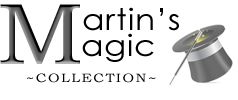
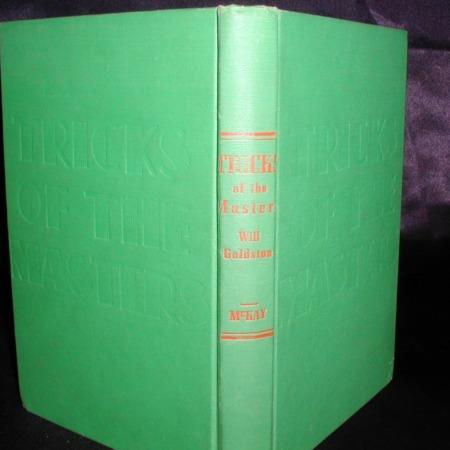
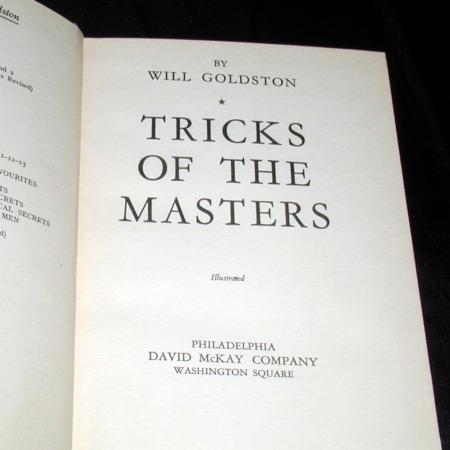
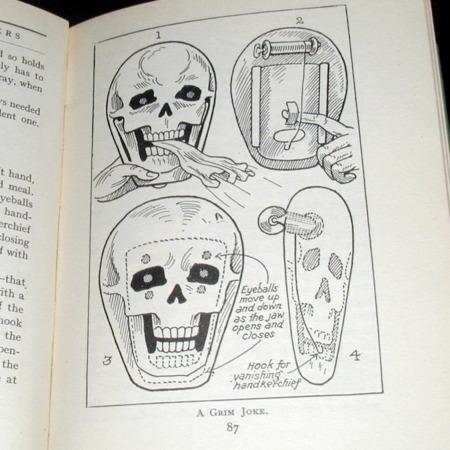
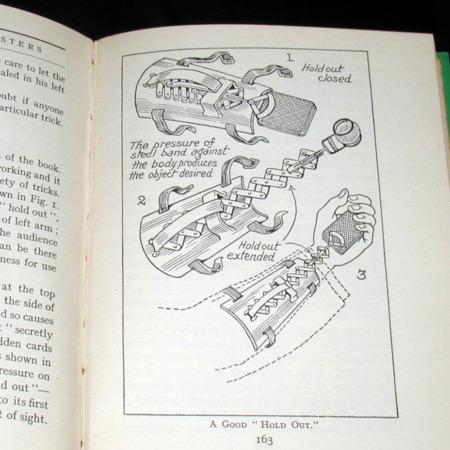

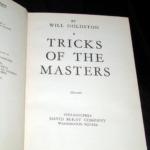
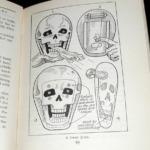

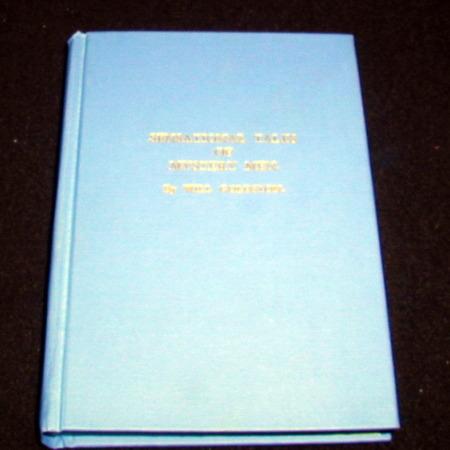
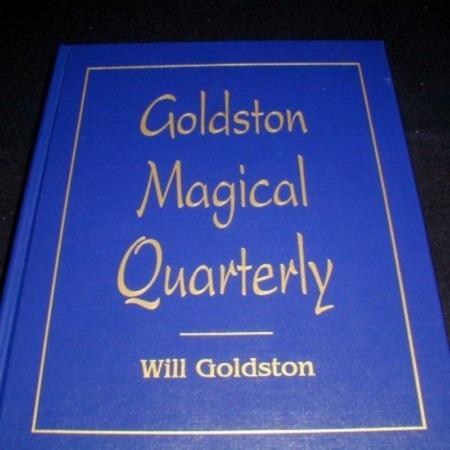

Reviews
There are no reviews yet.